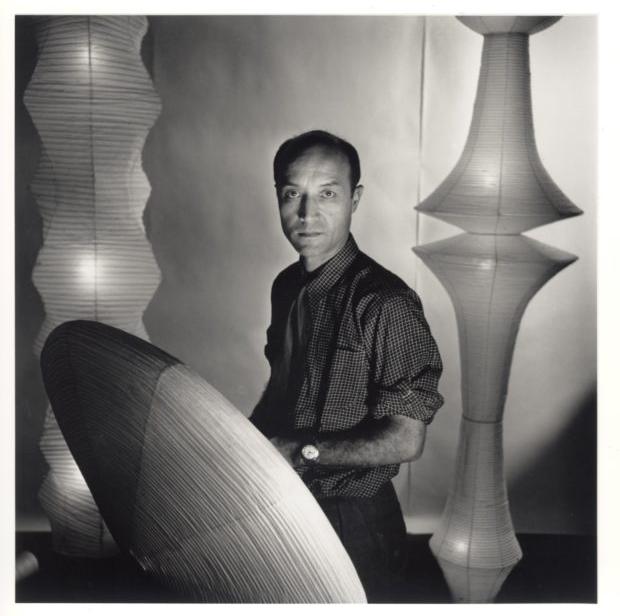Through a lifetime of progressive, socially-charged artistic experimentation, Isamu Noguchi (1904–1988) was one of the leading sculptors and designers of the twentieth century. Born in Los Angeles, California, to an American mother and a Japanese father, Noguchi lived in Japan until the age of thirteen, attended high school in La Porte, Indiana and one year of college at Columbia University in New York City. In the early days of the United States’s entry into World War II, Noguchi worked tirelessly to prevent the displacement and incarceration in prison camps of Americans of Japanese heritage, and when that failed, he voluntarily entered the Colorado River Relocation Center incarceration camp in Poston, Arizona, where he remained for six months hoping to improve the design of the camps and to institute culturally meaningful programs for the prisoners. In a career spanning six decades, Noguchi created everything from a monument to Benjamin Franklin and a garden for UNESCO’s Paris headquarters to one of the most recognizable tables of the century, Akari light sculptures, more than twenty sets for Martha Graham, the first non-functional Japanese ceramics, and the only museum in the United States founded by an artist to show their own work. Noguchi received the Edward MacDowell Medal for Outstanding Lifetime Contribution to the Arts in 1982; the Kyoto Prize in Arts in 1986; the National Medal of Arts in 1987; and the Order of the Sacred Treasure from the Japanese government in 1988. He died in New York City in 1988.

Photograph of Isamu Noguchi taken by photographer Louise Dahl-Wolfe in 1955.
The White House Historical Association is honored to support the addition of a new sculpture to the White House Collection. Selected by First Lady Melania Trump, Isamu Noguchi’s 1962 bronze sculpture Floor Frame was unveiled in the White House Rose Garden. Acquired for the White House Collection with assistance from the White House Historical Association, this is the first work of art by an Asian American artist in the collection.
As a companion to the unveiling of the new sculpture, the White House Historical Association has launched a new web collection, "Diversity in White House Art." The collection features articles on prominent artists in the White House Collection who demonstrate diverse representations of American life, including works by women and artists of color. “Diversity in White House Art” features pieces about Alma Thomas, Jacob Lawrence, Simmie Knox, Henry Ossawa Tanner, Greta Kempton, Georgia O’Keeffe, and, now, Isamu Noguchi. Additionally, the Association has developed new educational resources about diversity in White House art, including a Classroom Resource Packet and an educational video.
“The art of the White House should showcase the very best of American artists, and that means curating a collection that reflects the full diversity of our nation’s artistic heritage” remarked Stewart McLaurin, president of the White House Historical Association. “Noguchi’s inclusion in the White House Collection is a worthy testament to his incredible life’s work and is a milestone in our efforts to ensure that Americans from all cultural backgrounds are represented.”
To honor the addition of this important piece to the White House Collection, the Association will host a virtual program about Isamu Noguchi and the importance of having diverse artists represented in the White House Collection on December 1st at 10:00am EST. The program is split in into two panels, and second panel will be hosted in partnership with the Japan Society. The program is free and open to the public.




























